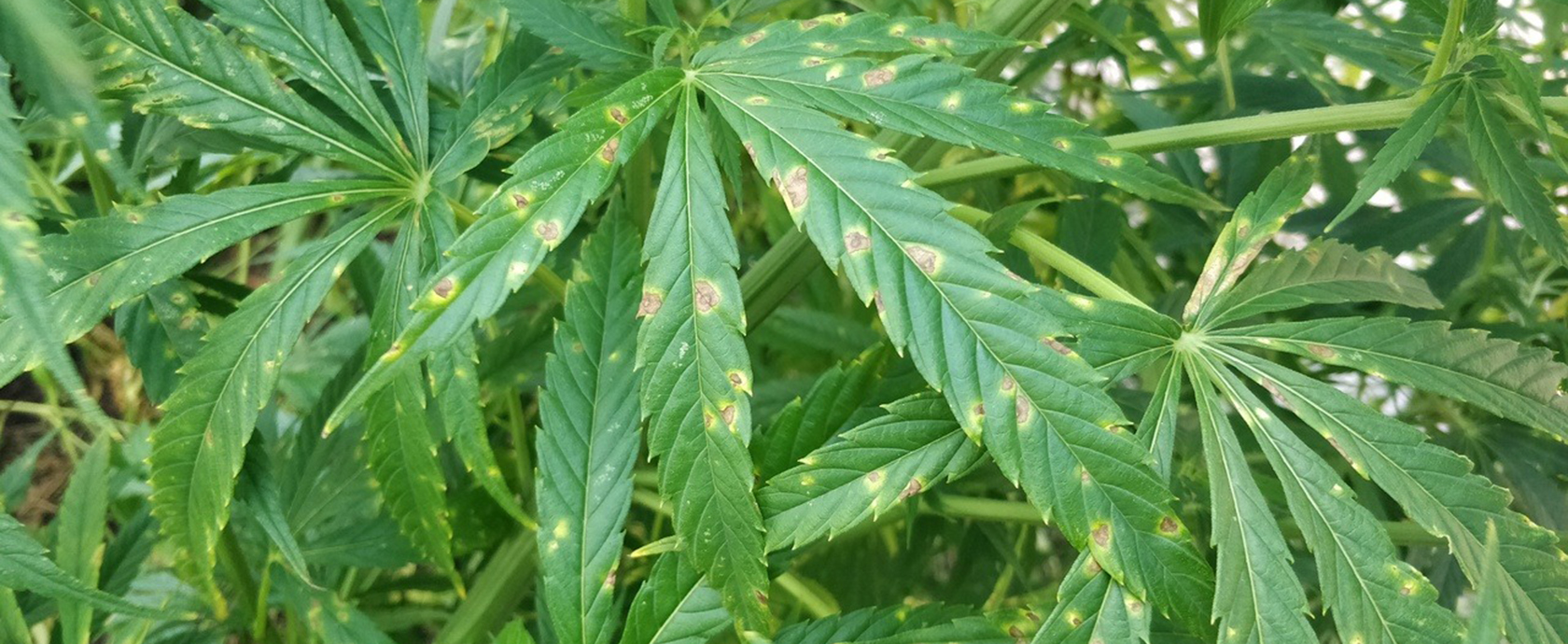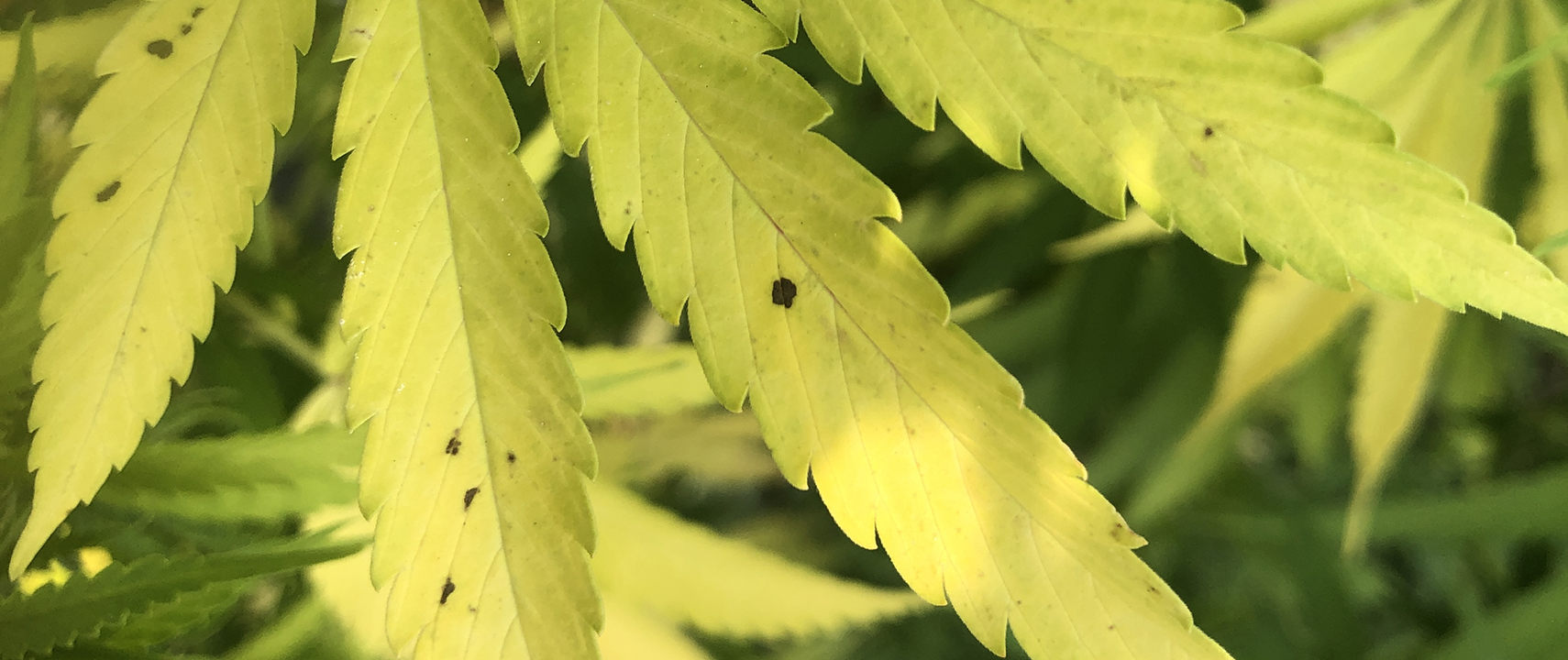Leaf Spot
Bipolaris gigantea (cereals, corn, grasses, rice, other monocots) is widespread in eastern and midwestern U.S.
Cercospora cannabis and other Cercospora spp.
Septoria cannabis and other Septoria spp.
Hosts
- Hundreds of different susceptible host plants including hemp, agricultural crops, trees, and ornamentals.
Symptoms
Cercospora causes circular to elliptical spots that are gray with dark brown margins. Septoria leaf spots first appear on older leaves within the plant canopy where humidity is higher. Lesions start as small brown spots with bright yellow halos and may enlarge and coalesce to irregular blotches. Entire leaves may turn yellow and drop from plant.
Disease Cycle
Leaf spot fungi overwinter in the field as hardy fruiting bodies (such as pycnidia) within previously-infected crop debris. Under cool, wet conditions, the fruiting bodies release spores (conidia) that are rainsplashed or wind-driven to susceptible plant tissue. After landing on a host, spores germinate and infect the foliage. If rainy conditions persist in the spring and summer, leaf-spot pathogens can spread season-long.
Time for Concern
Year-round in greenhouses and in field plantings, only during periods of cool weather, high humidity, and rainy conditions.
When and Where to Scout
- Start scouting for leaf spots about a month after planting.
- Monitor the older, inner foliage of plants, plants that are in dense plantings, and plants that have been exposed to excessive wetting.
Threat Level
Very low. No cannabinoid yield losses have been observed on plants infected with leaf spots in other states.
Occurrence in Utah
Only found in a few locations in Utah. More commonly found in regions with wetter climates.
Management
- Remove dead/infected plants and debris or till crop debris to promote death of overwintering fungi.
- Spacing plants properly to promote airflow.
- Maintain good plant health.
- A few fungicides are approved in Utah for leaf spots.
Look-alikes
Nutrient deficiencies, insect feeding.
Fungicides for Leaf Spot (Cercospora, Septoria, Pseudocercospora)
| Utah-Registered Product | Active Ingredient(s) | Notes |
|---|---|---|
| Organocide 3-in-1 Garden Spray, Ready to Spray; Ready to Use | sesame oil | |
| Organocide Bee Safe 3-in-1 Garden Spray Concentrate; RTU | sesame oil | |
| OxiDate 2.0 | hydrogen peroxide | |
| OxiPhos | phosphorous acid, mono- and dipotassium salts of | Use allowed prior to final transplant. |
| Regalia CG Biofungicide | Reynoutria sachalinensis (knotweed) |
Outdoor use only, |
| ReLoad Fungicide | mono- dibasic sodium, potassium, and ammonium phosphites | Greenhouse use only. |
| Safer Brand Garden Fungicide for Flowers, Fruit, and Vegetables, Concentrate | sulfur | |
| Safer Brand Insect Killing Soap Concentrate II | potassium salts of fatty acids | |
| Serenade Garden Disease Control Concentrate, Ready to Spray | Bacillus subtilis qst713 strain | |
| Triact 70 | clarified hydrophobic extract of neem oil | Older versions cannot be used on cannabis. |
| Triathlon BA | Bacillus amyloliquefaciens strain d747 | |
| Trilogy | sulfur | |
| ZeroTol 2.0 | hydrogen peroxide | Greenhouse use only. |
Photo Credits
- Nancy Gregory, University of Delaware, Bugwood.org
- aphidcluster, tumblr.com
- USU Extension IPM Program




